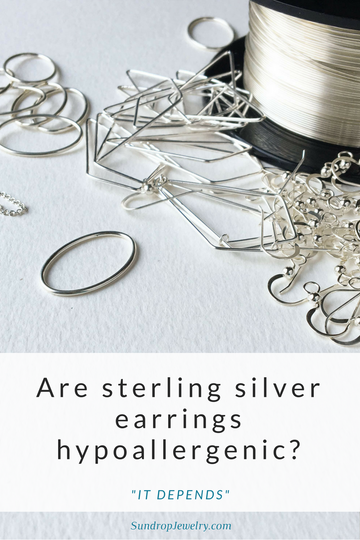|
 "Am I allergic to sterling silver earrings?" you ask? Like so many things, the answer is, "it depends." "Am I allergic to sterling silver earrings?" you ask? Like so many things, the answer is, "it depends."
Is sterling silver hypoallergenic?
Sterling silver must be at least 92.5% pure silver, with the remaining 7.5% filled in by another metal. Most of the "fill" is copper (another soft, but non-allergenic metal), with a tiny bit of something else to help the soft metals keep their shape and not get damaged. Sometimes, that other metal is nickel. Quite a few people are allergic to nickel. However, often the other metal is something benign to most people - zinc, tin, boron, lithium, germanium, platinum, or indium. But, unless the product states, “Made with nickel-free sterling silver”, or “Made of hypoallergenic sterling silver,” you can’t be certain whether or not the piece contains nickel. (And sadly, sometimes, those labels are lying.)
If I'm allergic to some sterling silver earrings, what can I wear?
If you’ve had allergic reactions to some sterling silver earrings in the past, nickel is probably the culprit, and you should stick to nickel-free sterling silver. Or, even better, make the switch to Argentium sterling silver! Argentium is hypoallergenic because it uses germanium for a hardener. I have never heard of anyone having an allergic reaction from Argentium - germanium is even used in some medicines to treat food allergies. (WebMD) There are some reports that even people who have allergic reactions to non-nickel sterling silver and lower-karat gold can wear Argentium silver with no problems! (I don't have any metal allergies, so I can't test it personally.)
Using germanium leads to a slightly whiter, brighter silver that is somewhat tarnish resistant. And the next best thing (after being hypoallergenic) is that Argentium sterling silver is certified 100% recycled, reducing demand for mining virgin silver ore (and all the pollution, emissions, and extra energy use that goes with mining and refining)!
|
